Present by:
- Maria Fernanda Aguilar Camacho
- Felipe Villar Martínez
- Armando Botero
Felipe Villar Martinez: I am student of Marketing, this career is really amazing and I want to be the best in that, I like to ride bicycle, I was born in Bogotá. I am convinced that this Blog will be interesting for you.
Maria Fernanda Aguilar Camacho: I was born in Bogotá 18 years ago. Currently, I am a student of Physiotherapy in Sabana University. This career is the way to build my dreams. I hope that in some years I can achieve be a professional. About my hobbies, I like sports specially the soccer and I like draw, too. Hopefully, this blog will be to your liking.
Armando Botero Vila: I'm a System Engineering of a Javeriana University and I have a Master degree in Carlos III University of Madrid Spain. Actually I'm a project manager of the SIGA project in the Sabana University. I like travel and know new places and cultures, in each journey I have learned history, I have known new people and I have tasted new food, and I would to continue traveling.
Maria Fernanda Aguilar Camacho: I was born in Bogotá 18 years ago. Currently, I am a student of Physiotherapy in Sabana University. This career is the way to build my dreams. I hope that in some years I can achieve be a professional. About my hobbies, I like sports specially the soccer and I like draw, too. Hopefully, this blog will be to your liking.
Armando Botero Vila: I'm a System Engineering of a Javeriana University and I have a Master degree in Carlos III University of Madrid Spain. Actually I'm a project manager of the SIGA project in the Sabana University. I like travel and know new places and cultures, in each journey I have learned history, I have known new people and I have tasted new food, and I would to continue traveling.
CHINA
THE COLOR IN CHINA
The
colour is very important in our lifes, this allows us to express our state of mind, can reflect your
personality and in the cultures as China, represent symbols and traditions.
BLACK
Black is a neutral colour that represent the depth
of thought. It was considerate as sky colour by I Ching ( Book of
changes), because the northern sky was black for a long time. It is
also the colour of the knowledge, confidence, power and will.
In ancient China, Ying and Yang uses black and
white in order to symbolize harmony
and balance. In modern China, black is used in daily clothing. This colour has
different meanings: water (element), north (orientation), winter (season), cold
(condition), listen ( action) and ear (senses).
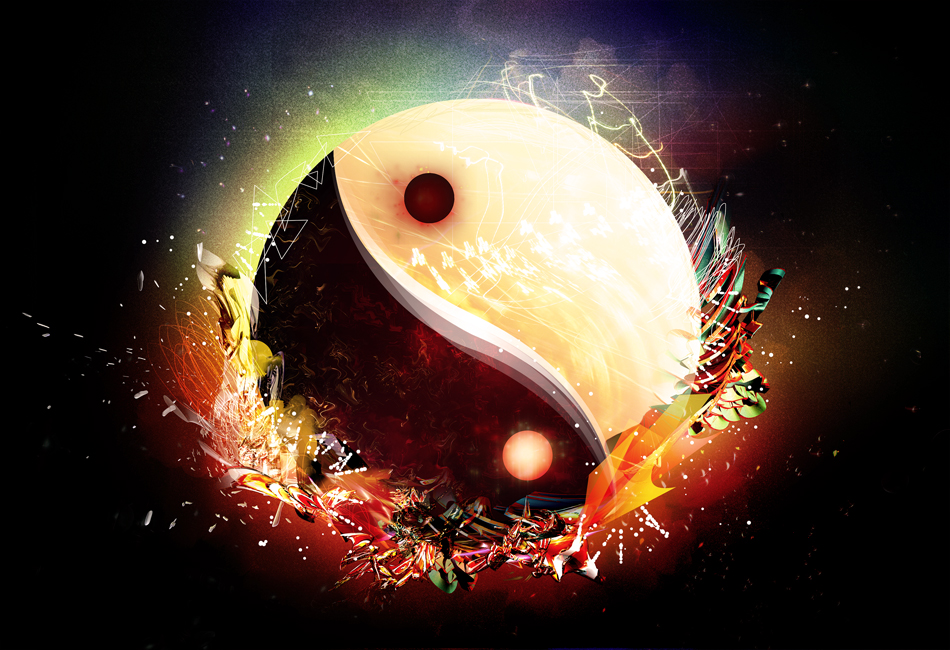
RED
Red is considerate as the colour of good luck and happiness. It represent fire, force o and heat. In Chinese traditions, this colour is found during Chinese New Year when people send messages in red papers symbolizing economic prosperity. Some of the red meanings are: fire ( element), south ( orientation), summer ( season), heat (condition), view (action) and touch (sense).


In the flag, red represents the revolution of the people.
QING
Qing is the grouped most shades of blue together with green, whose represent plant life, vegetative life, renewal, vigour and vitality.
WHITE
White symbolizes metal, gold and brightness, purity, and fulfilment. . Chinese people wear white in funerals because this colour is associated with death .
YELLOW
Yellow is considered the most beautiful and prestigious colour. It signifies neutrality and good luck.
Yellow was the emperor's colour in Imperial China and is held as the symbolic colour of the five legendary emperors of ancient China.
TRADITIONAL CHINESE FESTIVALS AND EVENTS
The Chinese people have a lot of festivals and celebrations in the year. Each of these festivities defines the culture and activities of every month. Most of the festival are based on the lunar calendar.
The most well know festivals are the Chinese New Year, the Lantern Festival, the Qingming (Tomb Sweeping) Festival, Double Seven Festival, and the Winter Solstice. Furthermore, many of these festivals attract people from different places, cultures and religions, becoming these into a major tourist attraction around the world. Below are some important festivals celebrated by the Chinese people:
SPRING FESTIVAL
This is the most important festival among Chinese people, because it's like Christmas for Western culture. Besides, at this time all people return home to spend this time with family.
The Spring Festival falls on the 1st day of the 1st lunar month, often one month later than the Gregorian calendar. It originated in the Shang Dynasty (c. 1600 BC-c. 1100 BC) from the people's sacrifice to gods and ancestors at the end of an old year and the beginning of a new one.
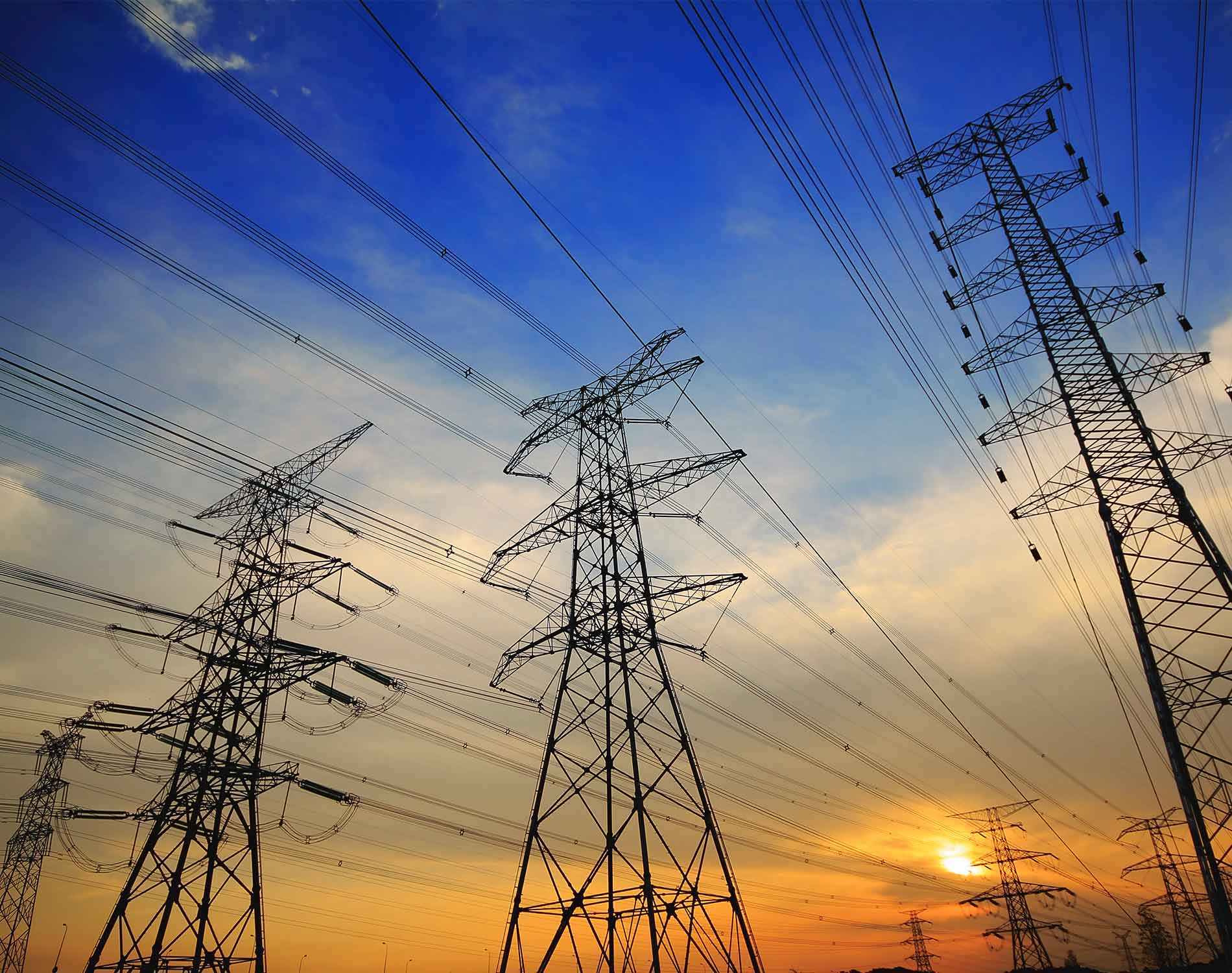

This celebration, starts every year in the early days of the 12th lunar month and will last till the mid 1st lunar month of the next year. Of them, the most important days are Spring Festival Eve and the first three days. The Chinese government now stipulates people have seven days off for the Chinese Lunar New Year.
Many activities are performed at this event, as wear costumes, decorate the rooms where the predominant colour is red, make parades with dragons and other important symbols of Chinese culture. However, the most important part of this celebration is when the new year begins, where it's received with a fireworks explosion wearing colours all Chinese sky.
THE LANTERN FESTIVAL
The lantern festival is very important for Chinese people because is celebrate in the last day of the spring festival. Moreover, this festival is also the first moon night in the Chinese Calendar. Owing to this, the family seeks together to celebrate this date.
In this festival, the people wear different folk customs that including several kinds of lanterns and lights. The people come out to the streets and enjoy the fireworks, the full moon and the party. Also, the experts make the most wonderful lanterns with different sizes and shapes, such as dragons, balloons, tigers, horses, stars and abstract forms.
On the other hand, in this celebrations are also famous make ask and answer riddles, witch are know as Guessing lantern riddles. The lantern owners paste papers in the lantern with the riddles, people can catch the paper and aswer the riddle. If the answer is correct the owner will give you a gift.
In this festival, the people wear different folk customs that including several kinds of lanterns and lights. The people come out to the streets and enjoy the fireworks, the full moon and the party. Also, the experts make the most wonderful lanterns with different sizes and shapes, such as dragons, balloons, tigers, horses, stars and abstract forms.
On the other hand, in this celebrations are also famous make ask and answer riddles, witch are know as Guessing lantern riddles. The lantern owners paste papers in the lantern with the riddles, people can catch the paper and aswer the riddle. If the answer is correct the owner will give you a gift.
DRAGON BOAT FESTIVAL
The Dragon Boat Festival is a important holiday in China, it is occur on the fifth day of the month five of lunar calendar, about June 2 of gregorian calendar.
This celebrations have many customs like eating different dishes such as rice dumplings, hanging calamus, Chinese mugwort, smoked herbs and Chinese Angelica. Moreover, the most important evente in the festival is the racing drangon boats.
The racing boats held around the country and start with the sound of a shot. The boats are allusive decoration dragons, where different colors, claws, teeth, scales and personality of each team are printed. The predominant colors are red, yellow and Green that denoting the strength of dragons and speed in the wáter to win the race
GLOBALIZATION
Economic globalization can be compared to a two-blade sword or a coin with two sides. Advantages and disadvantages exist side by side. It can also be likened to swimming in the sea in summer. One can enjoy the cooling feel of the water and swimming can improve the physique; but one also runs the risk of catching cold or even drowning.
The developed countries are good swimmers, while the developing countries are less strong in physical strength and poorer in swimming technique of swimming, or even just beginners. It is only natural that they feel very differently about swimming in the sea.
Globalization offers China opportunities as well as challenges. How should it strive to profit from the advantages and avoid the harm brought about by the disadvantages? Attention is demanded to the following aspects.
First, making better use of foreign investment to promote the industrial uplifting. China welcomes medium and small overseas entrepreneurs to invest and also sets great store by investment from foreign transnational corporations and big foreign enterprises. Capital is encouraged to exploit underdeveloped regions in western China, and further develop labor-intensive industries using China's rich resource of relatively cheap labor.
An even greater amount should be used to speed up the development of high and new technological industries, so that China's industrial standing can be raised and its international competitiveness strengthened.
Second, speeding up the reform of the financial system and improving the risk-prevention system. The setting up and improvement of the central bank, organized to carry out specific polices, the commercial banks and non-banking financial institutions, should be continued. The state-owned banks should be commercialized and genuinely run in accordance with the demands of a market economy.
In financial macro-control, the principle of sectoral operation and management should be implemented, a centralized and unified supervision system promoted, and the mechanism of supervision over foreign banks in China should be worked out and improved as soon as possible, so that an effective financial safeguard and security mechanism can genuinely function.
Third, in order to optimize the export structure and fully participate in international trade, China must seize the opportunity presented by admission to the WTO to actively optimize its export structure and increase the export of famous-brand and good-quality products. It must not rest content with the fact that manufactured goods make up 87 percent of its total exports, for most of these goods are products with low added value and low technological content. Readjusting and optimizing China's export structure remain an arduous task.
Fourth, Deepening the reform of enterprises and improving their competitive edge. Instituting and improving the modern enterprise system, optimizing the enterprise grouping structure so that it reaches a certain scale and acquires the abilities of independent creation, and strengthening their competitive muscles in the domestic and international markets----these are still severe tasks confronting most of China's state enterprises.
Fifth, taking an active part in regional economic cooperation. China has always attached great importance to the activities of APEC, the Asia-Pacific official economic cooperation forum, and put forward many positive proposals to promote trade and investment liberalization, and economic and technological cooperation. China has also actively supported the consultation and cooperation of the "Three (China, Japan and ROK) plus 10 (the 10 Asean countries)" mechanism in East Asia.
Sixth, China must actively take part in the revision of the international financial system and global trading rules. After entering the WTO, China must first of all revise its own rules in accordance with the organization's requirements. However, as a developing country, it should be also take an active part in the revision of the existing rules of the WTO and other international economic organizations, so that it can reflect the demand of all the developing countries, reduce the negative effects of economic globalization to the minimum and make its own contribution in setting up a new international economic order.
PART 2
CHINA INFRAESTRUCTURE
Energy:
- China is the second largest consumer and producer energy in the world, after the United States.

- Oil production is very high, the fifth in the world, 3973 million barrels per day in 2008; but it is the second most consumer, being of 7831 barrels for day. Also , is one of the countries most installed capacity for renewable energy, especially in the field of renewable electricity and hydropower mainly, but also have boosted other.
Waterworks:
- The Water Department Hong Kong is working currently in the middle of renovating the city mains.
- Another project in which Hong Kong is working is for 85% of the water from toilets is sea, which already occurs in 80% of the toilets in the city. Includes construction of new facilities in different parts of the country to pump seawater.
- For his part, Drainage Service Department has been working in flood protection works valued at more than 20,000 million dollars several years.
Telecommunications:
- The telecommunications infrastructure in Hong Kong is very competitive and was liberalized in 1995.
- In the mobile market there are a total of five operators and competition between them remains low rates.
- The penetration rate is 202.7% and the 102% fixed. There are 185 internet service providers and 85.8% of households have broadband. It also has 9.173 points public Wi-fi.
 Environment:
Environment:
- The Environment Protection Department is implementing a plan that includes improving air quality, better treatment of wastewater, increase renewable energy or reducing waste in the city.
- It also works to reduce dependence on electricity generated by coal and creating a regulation with energy saving standards for new buildings.
Transport

- The Highways Department is responsible for roads and railways, but the latter are operated by MTR Corporation Limited. It is estimated that MTR Corporation will invest over 40,000 million Hong Kong dollars, of which 34,600 million was earmarked for railway projects.
- Roads and street lights are repaired and new roads are built.
- The rail network has 218 kilometers of track.
-Video about infraestructure in China:
IMPROVING TECHNICAL AND VOCATIONAL EDUCATION IN CHINA
Project Technical and Vocational Education and Training Guangdong, funded by the World Bank is helping three technical schools in the province of Guangdong (ETS Guangdong Urban Construction, Light Industrial ETS and ETS Guangdong Yangjiang) to overcome these challenges for vocational education to improve quality and better adapted to the needs of students.
A priority of the project is to modernize curricula, including the introduction of a modular competency-based curriculum and student-centered. Wei Bincheng, classmate of Wu Di and specializes in construction management, says the changes are evident.
IMPROVING ECONOMIC IN CHINA
The Route of Chinese Silk (Silk Road Economic Belt), arises to promote economic cooperation in the region, through heavy investment in infrastructure, and avoid leadership, long-term US . and other regional powers.
Through these development projects China solves two problems. On the one hand strengthens relations with all regions and relevant powers, promoting economic development.Through the Silk Road (Silk Road Economic Belt, the maritime silk route (Maritime Silk Road) and ADB Infrastructure and Investment (Asian Infrastructure Investment Bank - AIIb) , a huge infrastructure of roads, railways, airports and ports will be built. The goal is to connect China with Russia, Africa, Europe and Oceania and promote trade. And moreover, and the result of this investment, reduce its foreign exchange reserves in dollars that has accumulated in the US trade .

China's new infrastructure
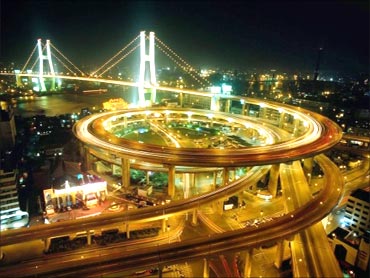
-China is making big investments in roads, railways, and other infrastructure.
-The race to build roads

-Planes, trains, and automobiles
-China's water wars-To solve its water shortages, China is rerouting itd riovers China has a water problem.
-China's water wars-To solve its water shortages, China is rerouting itd riovers China has a water problem.
CHINA EDUCATION
- China’s literacy rate: (age 15+ who can read and write)
total population: 91.6%
male: 95.7%
female: 87.6%
- School life expectancy (primary to tertiary education):
male: 11 years
female: 12 years (2009)
China facts: EDUCATIONAL SYSTEM
- China has about 400 million students today.
- Chinese children typically start their formal education at age two.
- By the first semester of first grade, students are expected to recognize 400 Chinese characters and write 100 of them.
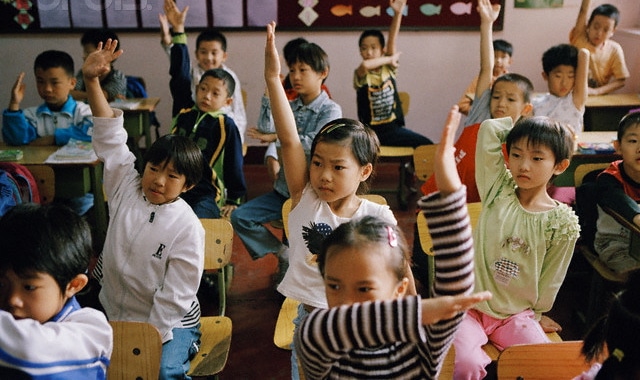
- Chinese citizens must attend school for at least nine years. According to data from China’s Ministry of Education, China has a 99% attendance rate for primary school.
- Under China’s “Law on Nine-Year Compulsory Education,” primary school is tuition-free. However, students must pay a small tuition fee after the compulsory nine years of education during middle and high school.
- To boost literacy rates, the Communist party switched from “traditional” Chinese characters to a “simplified” form (using fewer strokes). Singapore also uses simplified Chinese, however, traditional characters are still used in Hong Kong and Taiwan.
- During the early days of Mao’s Cultural Revolution (1966-76), higher education in China effectively shut down. In 1975, Deng Xiaoping reported that university graduates were “not even capable of reading a book” in their own fields after graduation.
- China did not have any private schools until the early 1980’s. Today, there are over 70,000 private schools in China of all levels and type.
China facts: HIGHER EDUCATION
- More than 60% of high school graduates in China now attend a university, up from 20% in the 1980s.
- The number of students in China enrolled in degree courses has risen from 1 million in 1997 to 5 million today.
- The number of higher-education institutions in China has more than doubled in the past decade, from 1,022 to 2,263.
- Today, China has over 2,000 universities and colleges, with over 2 million total students enrolled in higher education.
- “Harvard Girl” (2000) was a best-selling Chinese book that was a “how-to manual” for parents on raising their children to get into top-tier universities overseas. It was written by the parents of a girl who was admitted to Harvard University, and spawned a genre of copy cat books.
- China is creating their version of the Ivy League, by singling out nine of its top universities. In a 2010 speech, Yale president Richard Levin said: “This expansion in capacity is without precedent. China has built the largest higher-education sector in the world in merely a decade’s time. In fact, the increase in China’s post-secondary enrollment since the turn of the millennium exceeds the total post-secondary enrollment in the United States.”
- Between 2003 and 2009, the average starting salary for China’s college graduates has stayed the same…while the starting pay for migrant workers during the same period rose by nearly 80%.
- Chinese students (over 127,000) are the largest group of foreign students in America’s universities. But only about 14,000 American students are studying in China. However, American students studying Chinese has continued to grow steadily.
- China has over 1,200,000 IT professionals and is adding 400,000 technical graduates each year. China ranks #1 in the world (followed by India and the US)
- China has around 170,000 certified lawyers, 12,000 law firms, and 300+ law schools.
JOB OPPORTUNITIES IN CHINA
What does it take to get a job in China?
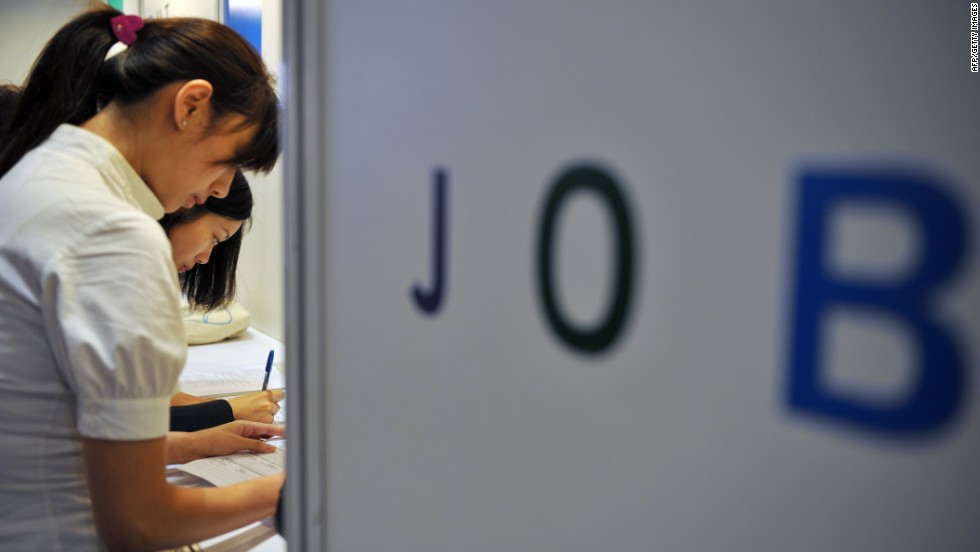
Work as a fashion model has taken Askerova across China and the rest of Asia, but "now it's time to find a real career," she said last month, in an overly-illuminated hotel conference room in the city's China Marriott Hotel.
Like hundreds of other visitors from across the world, the graduate in software development from Kazan State University was there for the Jobs Fair for Foreigners; one of three annual events organized by the Chinese government, where expats get a rare chance to meet prospective employers face-to-face.
FOOD IN CHINA
Main dishes
- Dim sum : It is a popular dish in China which is usually taken as a snack mid-morning or during the first afternoon tea together. These little cakes can be filled with fruits, vegetables, meat or seafood, and usually served in small containers.

- Zongzi : This dish is also known as rice dumplings , as is bamboo leaves stuffed with glutinous rice is usually steamed or boiled. It can be shaped either cylindrical or tetrahedron. It is a meal that is typically served during the Dragon Boat Festival, which takes place in early to mid June.

- Youtiao: This is a fried bread with elongated.
It's flavor is slightly salty and often taken for breakfast, but also as an accompaniment to soy milk or rice congee .

Desserts
- Fortune cookies :also known as fortune cookies . Although popularly considered as originating in China, it has really been the western culture that has entered the country and its impact has been such that now considered a typical sweet. This are typical of big cities like Hong Kong or Beijing. It is small crackers to take a role in which contains a prophecy or words of wisdom.

- Fried Ice Cream : consists of a scoop of ice frozen at a lower temperature than normal which is coated in raw egg and covered with crushed crackers or corn flakes. Once this has been done, fry for a few minutes. It ensures that the ice will not melt while due to the low temperature at which it is frozen fried. As for your presentation, you can add various ingredients according to taste: cinnamon, powdered sugar, honey, vanilla syrup, etc

HEALTHY/ UNHEALTHY HABITS
DIET:
The Chinese consider that most foods are medicinal, and if a proper diet is followed, it takes a little exercise, breathing exercises are done and take care of personal hygiene, can remedy minor ailments.
YING YANG
All foods contain aspects of yin and yang, but some belong so predominantly one or the other category.
Foods that are considered yin basically cold, wet, soft and dark. Water are yin foods such as fish and algae, which grow in the dark or underground, such as mushrooms and roots, as well as oats, barley, duck, rabbit, pork, eggplant, beets, squash, cucumber, watercress, spinach, rhubarb, tomato, lettuce, wheat, tofu, bean sprouts, banana, lemon, grapefruit and watermelon.
Basically yang foods are hot, dry, hard and usually show a clear hue. Usually they grow in the field, on the ground and in bright places. Yang are some shellfish such as mussels, garlic, asparagus, celery, fennel, parsley, leek, basil, cinnamon, cloves, coriander, cumin, soy, pepper, chicken, lamb, prawns, apricots, cherries, chestnuts, orange peel and peaches.
UNHEALTHY HABITS IN CHINA
Smoking:
The policy of no smoking indoors does not apply everywhere, so at some restaurants many people smoke. This causes many diseases and harms nonsmokers like a Heart disease, cancer and respiratory disease. The smoking is linked to 1 million deaths in China every year.
Fast Food:
Western fast food has been implanted in Chinese culture, especially in young people. This habit creates desardenadas female customers and serious health problems like obvesidad, heart disease, sleep disorders, etc.
High-Salt diet:
This is the biggest health problem in China, because the people in this country consume twice the recommended maximum salt. This causes problems mainly high blood pressure.
China Sport
China has different
kinds of sports that has developed through his history, some have inspired the
creation of some modern sports.
Tug of War Rope (Bahe): This is a traditional game that in the past
involving all ethnic groups. The game consists two teams to face, the teams pull
on opposite ends of a rope, with the goal being to bring the rope a certain
distance in one direction against the force of the opposing team's pull.
Ancient Football (Cuju): This is the oldest football game in the world.
Initially this sport was practiced by soldiers and samurai who used a stone
ball. The main objective was to improve the physical condition of the troops.

The Shaolin Gongfu
Kung Fu Shaolin Monastery
Kung Fu Shaolin monastery originated in the Buddhist atmosphere of the Temple Mount Song. It is one of the ways in which the monks to practice Buddhism Chan, reflecting a whole way of understanding life.The design and order of the movements are based on medical knowledge of ancient China. These movements are adapted to the natural structure of the human body and used to its full potential. As an outstanding example of ancient culture of martial arts in China, Shaolin Kung Fu is popular in many countries. Today, it is a whole spiritual and cultural value to the Chinese people that is shared with the rest of the world.
Kung Fu Shaolin monastery originated in the Buddhist atmosphere of the Temple Mount Song. It is one of the ways in which the monks to practice Buddhism Chan, reflecting a whole way of understanding life.The design and order of the movements are based on medical knowledge of ancient China. These movements are adapted to the natural structure of the human body and used to its full potential. As an outstanding example of ancient culture of martial arts in China, Shaolin Kung Fu is popular in many countries. Today, it is a whole spiritual and cultural value to the Chinese people that is shared with the rest of the world.

Taiji
Taichi
Taiji is known as internal martial art because it has its basis in philosophical Taoism, unlike shaolin which is related to Buddhism Hindu origin. Taijiquan wants the body to move and behave based on the laws that govern the philosophy of Yin and Yang. While it is true that by its nature can be practiced by people of any age (we had students from 80 years old), it is also true that if practiced martial seeking to develop greater capacity, can be a strenuous job.
Taiji is known as internal martial art because it has its basis in philosophical Taoism, unlike shaolin which is related to Buddhism Hindu origin. Taijiquan wants the body to move and behave based on the laws that govern the philosophy of Yin and Yang. While it is true that by its nature can be practiced by people of any age (we had students from 80 years old), it is also true that if practiced martial seeking to develop greater capacity, can be a strenuous job.

Qigong
Qigong
Qigong (Chi Kung) is a Chinese method that combines gentle body movements, mental concentration and breathing to increase the power of man, these techniques are an inexhaustible source of peace, health and vitality and an ideal way to keep fit and protect us from tension and stress cotidiano.La practice of Qigong exercises to extending and improving the quantity and quality of this vital energy and its flow throughout the body and therefore sets or clears the patient's health. Qigong regulates the person to strengthen their health and preventing disease.On the other hand Qigong doctor can treat the patient directly through methods that activate the energy in your body.
Qigong (Chi Kung) is a Chinese method that combines gentle body movements, mental concentration and breathing to increase the power of man, these techniques are an inexhaustible source of peace, health and vitality and an ideal way to keep fit and protect us from tension and stress cotidiano.La practice of Qigong exercises to extending and improving the quantity and quality of this vital energy and its flow throughout the body and therefore sets or clears the patient's health. Qigong regulates the person to strengthen their health and preventing disease.On the other hand Qigong doctor can treat the patient directly through methods that activate the energy in your body.

Chinese Chess
Chinese (Xiangqi) Chess
Chinese Chess has the same origin as the international chess, or the Chaturanga originated in India to the seventh century.With great similarities with the international chess, fundamental differences are: addition of towers, knights and bishops moving and international chess, there mandarins and canyons, absent in the other. It is played on a board of 64 squares, but the chips are not placed in them but at the intersections of the lines, making it, in practice it is a 9 x 10 points. Two special features: a river between the areas of the two opponents, and a palace that holds the king and his two mandarins.
Chinese Chess has the same origin as the international chess, or the Chaturanga originated in India to the seventh century.With great similarities with the international chess, fundamental differences are: addition of towers, knights and bishops moving and international chess, there mandarins and canyons, absent in the other. It is played on a board of 64 squares, but the chips are not placed in them but at the intersections of the lines, making it, in practice it is a 9 x 10 points. Two special features: a river between the areas of the two opponents, and a palace that holds the king and his two mandarins.

Weiqi
Weiqi (Go)
The GO, also known as Weiqi in China and Baduk in Korean, is perhaps the oldest game in the world board, dating back to about 3000 years, originally from China and the Himalayas.There is a legend that the fate of Tibet, it was decided, on one occasion, on a board of GO (his Buddhist governor, to avoid a terrible battle and blood derramamineto, challenged his enemies on a board of GO). Introduced in Japan in the eighth century, it became the game of the Imperial Court, to spread quickly among the Buddhist clergy and the samurai. From the seventeenth century the Japanese government funded the professional activity of GO and make schools GO, whose growing rivalry between them formed the basis of the hegemony of Japan in this art, although all the professional structure of GO was eliminated in 1868, when the Shogunate collapsed and the emperor was restored, the hegemony of Japan has kept up to 80s of the twentieth century.
Great Wall of China
This is the main tourist attraction in China. Thousands of tourists visit it every year. This construction was made between the 5th century BC and the 16th century to protect the country from attacks by the Mongols
Terracota Army
The Terracotta Army is a collection of terracotta sculptures depicting the armies of Qin Shi Huang (221 BC-206 BC), the first Emperor of China. It is an attraction located in the province of Xian. This collection includes approximately 8,000 soldiers, 130 chariots with 520 horses and 150 cavalry horses.
Terracota Army
The Giant Buddha of Leshan is a gigantic Buddha statue carved out of a cliff face in Sichuan, western China.he Leshan Giant Buddha stands about 71 meters (233 feet) high and has three meter (11 feet) long fingers on each of its hands.













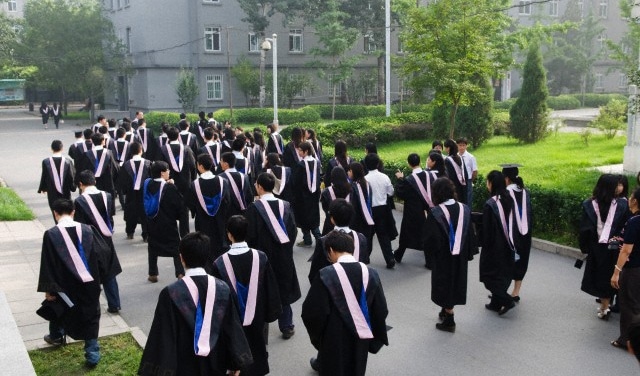
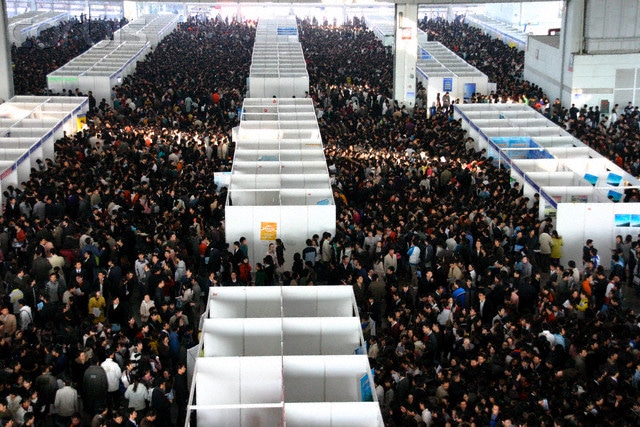












No hay comentarios:
Publicar un comentario